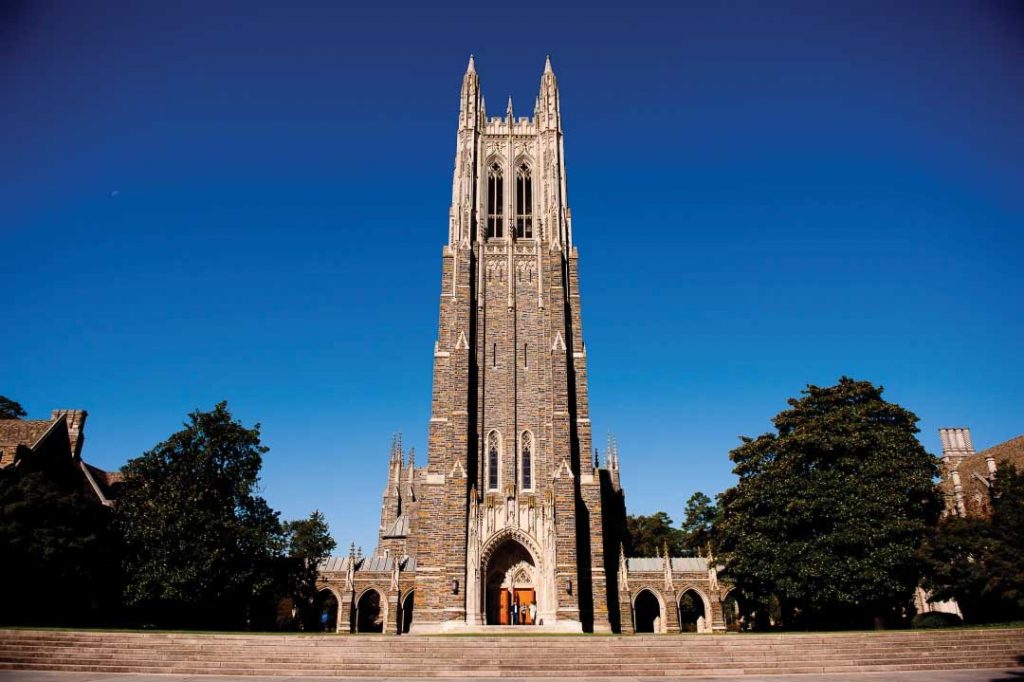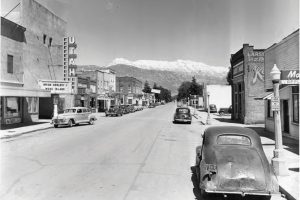By Jocelyn Rogers
Monmouth University’s most prominent building, dating from 1929, was designed by Julian Abele, the first African American to earn an architecture degree from the University of Pennsylvania. But it was named for Woodrow Wilson, whose legacy includes reinstituting racial segregation in the federal workforce.
That disconnect is no more. Monmouth’s board of trustees voted unanimously earlier this month to remove President Wilson’s name and honor Abele.
It’s not the first time Abele has received belated recognition from a major university he helped design. His story serves as a poignant yet inspiring example of the challenges faced by generations of African American architects.
“Willing and Able,” as classmates dubbed him, was born in Philadelphia in 1881. Elected president of the student architectural society by his Penn peers, he graduated in 1902. According to the biography, Julian Abele: Architect and the Beaux-Arts, by Dreck Spurlock Wilson, Abele’s additional degrees and certificates in architectural drawing made him “the most formally educated architect in all of America.” He is believed to have later studied at l’Ecole des Beaux-Arts — a style he embraced throughout his career in the nationally known Philadelphia firm, Horace Trumbauer. Abele’s collaboration with the eponymous firm’s founder was marked by “a great deal of respect,” according to Abele’s son — although, consistent with contemporary practice, the signature of Horace Trumbauer (who was not a formally trained architect) was the only one that appeared on his firm’s designs. “The lines are all Mr. Trumbauer’s,” Abele once said, “but the shadows are all mine.”
That signing practice, plus the collaborative nature of any large firm, makes it difficult to assign sole credit to Abele for many of his most well-known creations. But we know that he contributed significantly to the Philadelphia Museum of Art — immortalized in the movie “Rocky” — as well as the Free Library of Philadelphia and the Widener Memorial Library at Harvard University. Abele’s designs in Washington, D.C., include the Argentinian Embassy and what is now the Belgian ambassador’s residence.
“I think we’re really fortunate that Julian Abele’s talent wasn’t squandered due to Jim Crow,” commented Abele’s great-grandnephew Peter Cook, AIA, associate vice president and design principal at HGA. “One of the wonderful things about our profession is that the best of our work, for the most part, remain there for future generations to appreciate. And so his talent is still very much on display, and it graces so many of our cities.”
Abele’s body of work also includes numerous mansions in Newport and New York, including — notably — the Manhattan home of American Tobacco Company founder James Buchanan Duke (then the “costliest home” on Fifth Avenue, now New York University’s Institute of Fine Arts).
It was this commission that led to an enduring legacy that can be claimed fully and indisputably by Abele: the campus of Duke University. From the university’s iconic Duke Chapel to Cameron Indoor Stadium, home of the Duke Blue Devil basketball team, Abele designed the bulk of Duke’s West Campus between 1924 and 1950. As the university’s president Dick Brodhead put it in 2016, “Abele’s accomplishment was not any single building, but the whole campus — 30 buildings in all.”
After launching a committee in 2015 to explore ways to honor Abele, Duke’s Board of Trustees elected to engrave the Duke Chapel cornerstone with his name, commission a biography, fund an annual event recognizing African American student achievement, and rename the campus’ central passage Abele Quad. A plaque installed on the quad emphasizes that Abele “designed all the surrounding buildings” and quotes the famous St. Paul’s Cathedral epitaph of Christopher Wren: “If you seek his monument, look around.”

Julian Abele, AIA, Designed Duke University Chapel, as Well as More Than 30 Additional Campus Buildings, Between 1924 and 1950.
Generations of Duke students have strolled among the university’s Abele-designed buildings — an experience the architect himself may never have enjoyed. During the decades his vision was coming to life in North Carolina, multiple sources suggest the era’s Jim Crow policies prevented Abele from ever visiting the site — although evidence is inconclusive. It is certain, however, that Abele could not have experienced the campus as a student; Duke did not integrate until 1962, 12 years after his death. Even in Philadelphia, Abele could not escape segregation — although he did manage to reject it in his daily commute. According to a Smithsonian Magazine profile, Abele reportedly walked more than ten blocks to work each day rather than sit in the back of the city’s segregated streetcars.
Abele’s legacy also includes many descendants who joined the field, including his son Julian F. Abele, Jr., and his nephew, Julian Abele Cook, Sr. — grandfather of Peter Cook. These generations “could never have dreamed of the potential to be able to work as I work today,” says Cook, whose major projects include the Smithsonian Institution’s National Museum of African American History and Culture and the Embassy of South Africa — a project tasked with modernizing the space while preserving the architectural evidence of an “awful” past the country “couldn’t afford to forget.”
“In some ways that suggests that we’ve made progress in this country,” Cook reflects, “But every time you think about the progress we’ve made, there always seems to be some equal and opposite reaction that attempts to take us back to where we don’t need to go.”
A quiet man, Julian Abele left no personal account of his experiences confronting discrimination as he built a distinguished career. “My father would be very uneasy with all this attention,” his son commented at the Duke dedication ceremony, “But he was proud of his work at Duke.” What we do know is that upon Trumbauer’s death in 1938, Abele began signing drawings with his own name. He became an AIA member in 1942, listing in his application a house he had designed for his sister, and Duke University buildings he worked on after Trumbauer’s death.
If Abele’s achievements were overlooked in his lifetime, the oversight grew after his death in 1950 — even as work continued on the Duke buildings he had designed. It’s perhaps fitting that his name resurfaced there in 1986, as Duke students protested the school’s investments in apartheid South Africa. As part of the demonstrations, students built shacks in front of the Abele-designed chapel, prompting one student to lament that “our rights as students to a beautiful campus” were being violated.
Jocelyn Rogers
This story appears in Issue 1 2020-2021 of the Reflexion Magazine.







